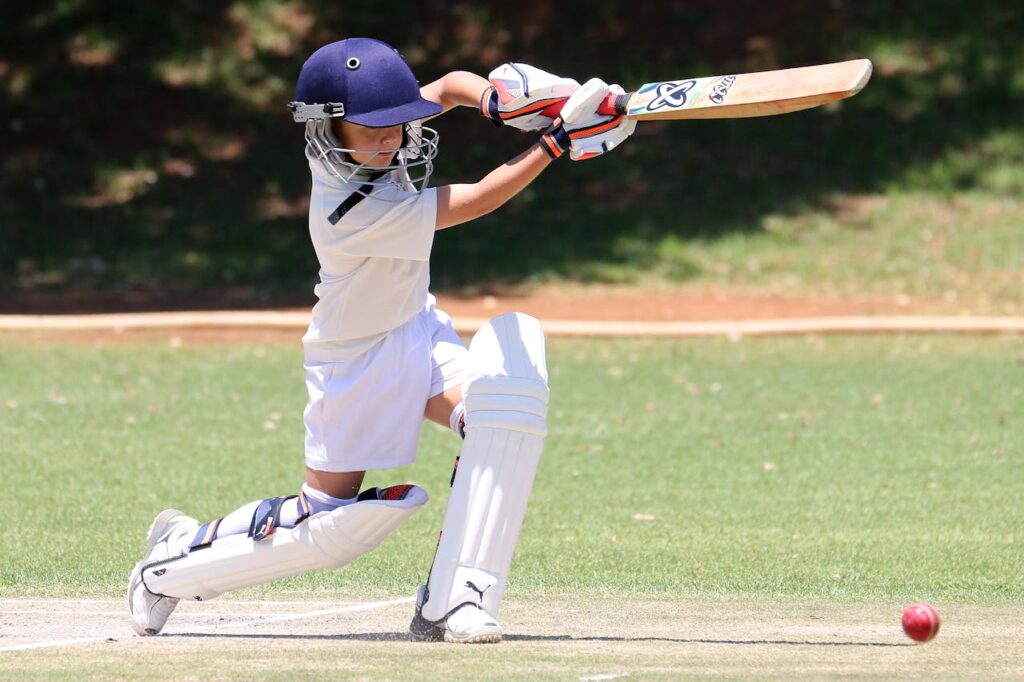Cricket is a game of nuance, history, and moments of electric brilliance — subtle shifts in momentum can flip games on their heads, and singular achievements can etch a player’s name into legend. Among these, the hat-trick holds its own revered status in cricketing folklore. A bowler dismissing three batters in three consecutive deliveries is rare and thrilling. But occasionally, something even more astonishing happens — a sequence even more devastating, more mythical. This is where the mysterious ‘double hat-trick’ comes into play, a phrase that often sparks confusion and debate.
So, what wickets constitute a double hat-trick? Is it three more after a hat-trick? Just four in a row? Or something more technical? In this comprehensive deep-dive, we’ll explore the exact meaning of a double hat-trick, how many wickets make it official, its rare occurrences in cricket history, and the strategic and statistical marvel it represents.
Let’s break it all down — wicket by wicket.
Table of Contents
- What Is a Hat-Trick in Cricket?
- Defining the Double Hat-Trick
- How Many Wickets Constitute a Double Hat-Trick?
- Common Misconceptions and Debates
- Historical Examples of Double Hat-Tricks
- Tactical and Psychological Impact on the Game
- Variants: Four in Four, Five in Five — Do They Count?
- Double Hat-Trick Records Across Formats
- Most Notable Bowlers to Achieve It
- The Anatomy of a Double Hat-Trick Over
- Why Double Hat-Tricks Are So Rare
- Did You Know? Bonus Hat-Trick Facts
- Conclusion – Where Does the Double Hat-Trick Stand in Cricket’s Pantheon?
1. What Is a Hat-Trick in Cricket?
Let’s start with the basics. A hat-trick in cricket occurs when a bowler dismisses three batsmen with three consecutive legal deliveries. These can be spread across overs and, sometimes, even across innings — as long as the same bowler delivers three successive balls and takes a wicket with each.
It’s one of cricket’s great individual feats. Hat-tricks are celebrated milestones, not just because of the skill involved but also the psychological unravelling of the batters facing a bowler in full rhythm. Crowd eruptions, TV replays, and excited commentators — a hat-trick ignites all these elements.
These moments are etched in memory — whether it’s a lightning-fast delivery crashing into the stumps or a clever variation causing a catch behind. But then there’s the even rarer sequel.
2. Defining the Double Hat-Trick
At first glance, the phrase ‘double hat-trick’ seems straightforward — double the original, right? But cricket isn’t always that simple. The term has gathered layered interpretations in different cricketing circles.
Technically speaking, a ‘double hat-trick’ is defined by many as four wickets in four consecutive balls. Think of it as going beyond the classic hat-trick and adding one more batter to the tally, without missing a beat. Some also extend the definition to five in five — triggering endless debate.
From statistical bodies to traditionalists across Test, ODI, and T20 cricket — opinions differ. But professionals and commentators tend to agree: four wickets in four straight deliveries constitute a double hat-trick.
“It’s like lightning striking twice not just in the same place, but in four bloody blinks.”
— A former fast bowler reacting to Lasith Malinga’s four-in-four demolition.
When measured by consecutive dismissals and impact… four is the base number for a double hat-trick.
3. How Many Wickets Constitute a Double Hat-Trick?
So let’s answer the burning question directly: Wickets that constitute a double hat-trick must be four taken in four successive deliveries by the same bowler.
Let’s frame it this way:
| Type | Definition | Number of Wickets | Number of Balls |
|---|---|---|---|
| Hat-Trick | 3 wickets in 3 consecutive balls | 3 | 3 |
| Double Hat-Trick | 4 wickets in 4 consecutive balls | 4 | 4 |
| Extended Double Hat-Trick | 5 wickets in 5 consecutive balls | 5 | 5 (very rare) |
This makes the double hat-trick a more exceptional and elusive feat, given the increasing difficulty of consistently taking wickets every ball. Unlike a hat-trick, which is already uncommon, achieving four-in-four often needs a perfect storm: form, conditions, nerves of steel.
4. Common Misconceptions and Debates
Cricket fans worldwide often debate on whether:
- Two back-to-back hat-tricks = double hat-trick?
- Four wickets in four legal deliveries = double hat-trick?
- Hat-trick followed by another in the next over = double hat-trick?
Let’s debunk common myths:
- Two Hat-Tricks ≠ Double Hat-Trick
Taking three wickets, then three more (spread across spells/overs) doesn’t qualify. That’s two hat-tricks, not one doubled. - Time and Match Context Don’t Disqualify
If a bowler ends one innings with two wickets and starts the next with two more — that’s four in four. Still counts, though some purists might grumble. - Extras and Non-Strikers Matter
Only legal deliveries count. If a no-ball or wide occurs between wickets, it breaks the chain and nullifies the sequence.
5. Historical Examples of Double Hat-Tricks
Cricket does provide these celestial performances once in a while — sometimes in the limelight, sometimes buried deep in domestic competitions.
1. Lasith Malinga (Sri Lanka)
During an ODI, Malinga took four wickets in four balls — a breathtaking burst of swing and accuracy. The dismissals came fast: bowled, LBW, caught behind, yorked. That was a classic double hat-trick.
2. Rashid Khan (Afghanistan)
In a T20 fixture, Rashid spun his web and completed four wickets in four deliveries — elevating his team’s chances and showcasing the potency of leg-spin under pressure.
3. First-Class Matches & Domestic Cricket
Several bowlers across Sheffield Shield, County Cricket, and Ranji Trophy have four-in-four performances. Because these often go under the radar, they don’t always get celebrated as intensively.
6. Tactical and Psychological Impact on the Game
Let’s not just talk numbers — let’s talk impact.
The moment a bowler gets a hat-trick, the field tightens, batters tense up, and the game pulses with new energy. Now imagine what happens after that third wicket.
That fourth delivery is more than just a ball — it’s psychological poker. The batter knows they’re up against a bowler in heat. One mistake, and they’re part of modern folklore — for all the wrong reasons.
For captains and strategists:
- Field Setting Becomes Crucial
Slips, short legs, catches close in — anticipation shifts dynamics. - Bowler Adrenaline Management
After three wickets, even pros feel the heart race. Calmness is key to landing that fourth dart. - Momentum Swings Hugely
One over, four wickets — in limited overs, it can seal the match. In Tests, it can turn tides one session at a time.
7. Variants: Four in Four, Five in Five — Do They Count?
Four is generally agreed upon. But…
What about five wickets in five balls?
This ultra-rare achievement — sometimes called “extended double hat-trick” — is even more formidable. Some view it as an individual class of miracle. It doesn’t yet have a standard nickname, but terms like “super hat-trick” or “double-plus” surface in commentary.
Only a handful of pro cricketers globally have managed five batsmen on five balls. It’s so rare the ICC barely has nameplates ready for it.
| Type | Colloquial Name | Consecutive Balls | Wickets Taken |
|---|---|---|---|
| 4 wickets | Double Hat-Trick | 4 | 4 |
| 5 wickets | “Super Hat-Trick” or Ultra | 5 | 5 |
| 6 wickets | Theoretical Heaven | 6 | 6 (never occurred) |
8. Double Hat-Trick Records Across Formats
| Format | Instances of Double Hat-Trick | Highest-Profile Bowler |
|---|---|---|
| Test | Extremely rare | N/A (historically unverified) |
| ODI | Rare | Lasith Malinga |
| T20I | Few | Rashid Khan |
| First-Class | Multiple (unrecorded) | Tony Tinné (Belgium), A. Vaalaten (South Africa) |
| Domestic T20 | More frequent | Harmeet Singh, K.A. Sheikh |
9. Most Notable Bowlers to Achieve It
Some names have become almost synonymous with wrecking-ball overs.
- Lasith Malinga: Four crushing yorkers in an ODI spell shook up the entire pitch mood.
- André Adams: Infamous for four in four in County cricket.
- Shaheen Afridi (U19 circuit): Raw pace, swing — dismantled Uganda with an unplayable spell.
They combine raw skill, tactical nous, and game-reading instincts to trap batters in quick succession.
10. The Anatomy of a Double Hat-Trick Over
A genuine double hat-trick doesn’t happen randomly. Here’s what a textbook four-in-four looks like from a bowler’s mindset:
Over Analysis:
- Ball 1: Target weakest batter — test technique, force loose shot.
- Ball 2: Refine length — maybe a slower ball or cutter.
- Ball 3: Go aggressive — bouncer or yorker.
- Ball 4: Mind game — surprise the batter (change angle, tempo).
The sequencing is crucial. One wrong ball, and the chain breaks. But get it right, and you’ve executed one of cricket’s ultimate mind-and-skill jigsaws.
11. Why Double Hat-Tricks Are So Rare
Unlike batting, bowling doesn’t always let the player dictate terms. You respond to pitch, batter temperament, match context.
Add to that:
- Changing end-of-over rhythms
- Fallible fielders
- Variations in bounce or swing
Taking 4 wickets in 4 deliveries needs:
- Surgical accuracy
- Attack-plan discipline
- Composure under adrenaline surge
12. Did You Know? Bonus Hat-Trick Facts
- First recorded hat-trick: Fred Spofforth (The “Demon”) in a Test match — creating the blueprint.
- Only bowler with 2 hat-tricks in World Cups: Lasith Malinga.
- Only hat-trick across three formats? Brett Lee almost achieved it — only missing T20I magic.
- Bowler gives cap after hat-trick? In early cricket custom, a player was given a ceremonial hat — hence the name.
13. Conclusion – Where Does the Double Hat-Trick Stand in Cricket’s Pantheon?
A double hat-trick is a lightning strike — rare, electric, unforgettable. It’s more than just a statistical footnote. It signals mental dominance, bowling dexterity, and game-altering brilliance.
In the end, the number of wickets that constitute a double hat-trick is four in four — each dismissal building tension, telling a story, and culminating in cricketing ecstasy.
Whether you’re a stat hound, an armchair expert, or a former pace bowler who’s come agonizingly close — the double hat-trick sits up there with the most jaw-dropping spectacles cricket has to offer.
So, next time you see a bowler on a hat-trick, remember: the magic might not stop at three.
Searches People Also Make:
- How rare is a double hat-trick in cricket?
- Has anyone taken five wickets in five balls?
- What counts as a double hat-trick officially?
- Fastest double hat-trick in international cricket
- What happens after a hat-trick ball?
Keep your eyes on the crease. Because when a bowler finds that line, that length, and that rhythm — miracles tend to happen in multiples.



